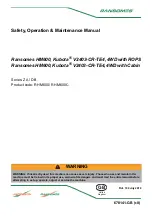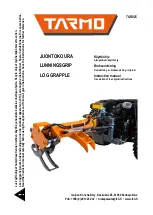
6. Top up with distilled water, if required.
IMPORTANT: During the cold season it is important that the engine is
allowed to run for a while after topping up with distilled water, otherwise the
water may freeze before it has had time to mix with the battery acid.
WARNING: Under no circumstances should you attempt to
replenish the battery acid yourself.
WARNING: Never use a naked flame to check the level of the
electrolyte.
7. Check the cables and battery terminals and clean them if necessary.
NOTE: If the water in the battery evaporates too quickly, it may be a sign that
the charging voltage is too high. Keep the battery clean and dry on the
outside. Protect the pole studs and the cable terminals with grease.
8. Push the battery back into place and refit the casing.
4.7.3.15 Checking the tyre pressure
Check the tyre pressure regularly, especially after changing the tyres.
IMPORTANT: Change tyres and wheels at a professional tyre workshop that is
equipped to handle this type of work.
•
Check the pressure of the tyres with a pressure gauge.
•
Add pressure, if needed.
WARNING: Avoid overinflation as excess pressure may cause the
tyre to explode.
4.7.3.16 Checking wheel nuts' tightness
Check the wheel nuts' tightness periodically to avoid unnecessary risks.
•
Check the tightness of the wheel nuts.
•
Check the tightness of the wheel disc/rim bolts.
4.7.3.17 Checking the emergency brake
Check the emergency brake (extra equipment) weekly.
1. Pull the emergency brake to check that it is functioning.
2. Adjust the emergency brake, if necessary.
Normally there is no need for adjusting, because the emergency brake is
adjusted (also parking brake), when the drive brakes are adjusted. The
adjustment is done the same way as parking brake adjustment. In this case,
the tractor has two cables.
4. Maintenance
- 263 -
















































